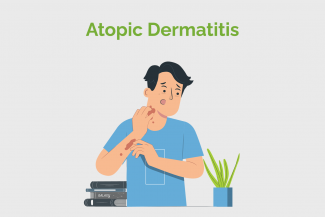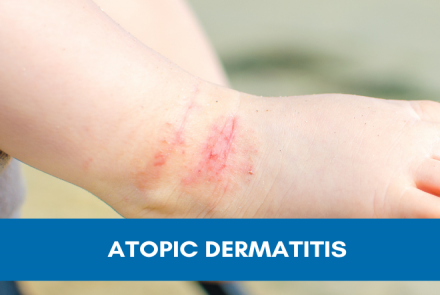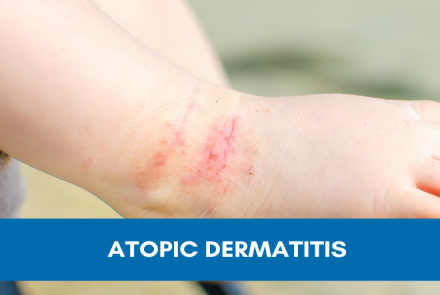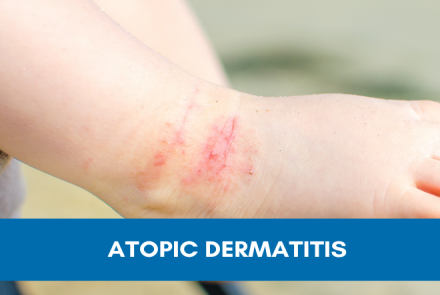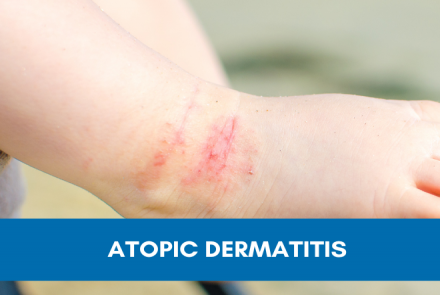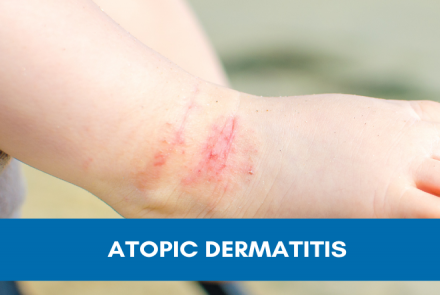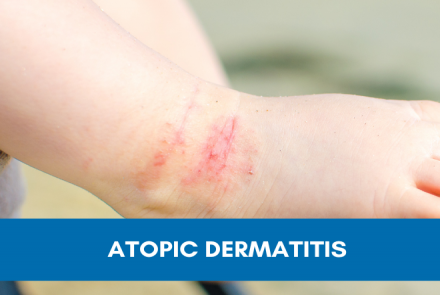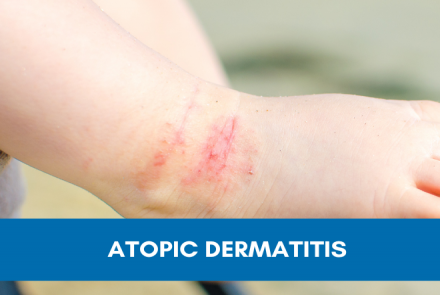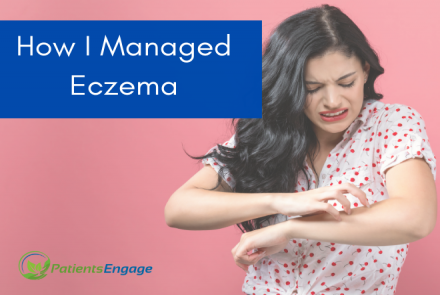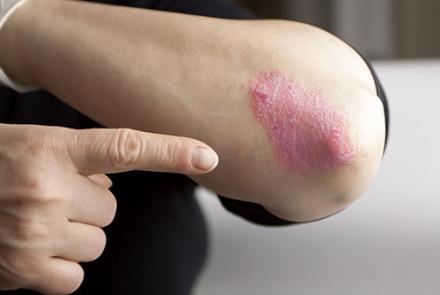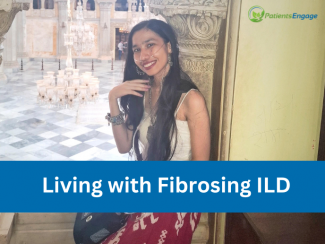
Atopic Dermatitis may present differently at different stages of a child's development.
Infancy
In infants, Atopic Dermatitis typically starts at around 6 to 12 weeks of age. About 60% of patients develop AD within the first year of life and 85% by the age of 5. The earlier the onset the more likely is a more severe course. The rash tends to be more generalized in younger babies and more localized in older children. It often appears on the cheeks and chin as a patchy facial rash that progresses to red scaly skin that may ooze and later get inflamed.
Later, the inner and outer parts of the forearms and legs may be affected. It is not uncommon to see infants with the bright red rash on both cheeks completely unperturbed by it, though the mother and the rest of the family may be greatly alarmed. With more severe involvement, the infant may be restless and irritable.
When the infant crawls, the exposed areas like knees may be involved. In some infants the scalp and skin folds may be involved and resemble a condition called seborrheic dermatitis which then progresses to a more typical Atopic Dermatitis.
Childhood
The infant with Atopic Dermatitis may improve or progress to childhood eczema. The course of Atopic Dermatitis is like a roller coaster with many ups and downs. During childhood the rash tends to occur behind the knees and inside the elbows; on the sides of the neck; around the mouth, and on the wrists ankles and hands. In severe cases, the entire body may be covered with the rash.
The rash often starts as itchy bumps (papules). The intense itching can be very bothersome, causes the child to be irritable and restless and interferes with the child’s sleep at night. The rash may cause the skin at the joints to be stiff and difficult to bend.
The skin around the eyes may be affected. Scratching and rubbing the area causes the skin to redden and swell. Some children develop an extra fold of skin under the eyes called the Dennie-Morgan fold or atopic pleat. Eyelids may also appear darker (hyperpigmented) in color. A moist rash around the mouth is also often seen and is called perioral eczema or lip lick dermatitis. When the rash is present in skin folds like below the ear, behind the ears or below the nose, the skin may get dry, cracked and fissured. The fissure below the ear lobes is characteristic of atopic eczema and is known as Hertoghe's sign.
The skin of the palms may have increased and prominent skin creases are called hyperlinear palms. A blistering or thickened dermatitis of the hand is often seen in many children and is known as atopic hand eczema. The nails may be involved and have pits or ridges on them. The feet are also often affected, especially in winter and known as atopic winter feet. Repeated eczematization on the neck may cause a brownish black discoloration which is known as ‘atopic dirty neck’.
Children with atopy may also have dry rectangular scales on the rest of the body which is known as ichthyosis. It is more prominent in winter and resembles scales or snake skin. Overall, patients with Atopic Dermatitis tend to have dry skin.
It is not uncommon to see fine, spiky bumps that have a grater like feel on the outer aspects of the upper arms, thighs, cheeks and trunk. It is known as keratoses pilaris.
Hives or red, raised itchy bumps also known as urticaria may occur in some patients with Atopic Dermatitis in response to exposure to an allergen or after exercise or a hot bath.
Children may also have a condition called Pityriasis alba which consists of round scaly patches with loss of color (hypopigmentation). These are common on the face and neck. These may be more apparent after prolonged or excessive sun exposure.
Puberty
In some children the disease goes into remission but may recur during puberty. In nearly half the patients with Atopic Dermatitis the rash may persist even after puberty.
Adult Atopic dermatitis
In some individuals, atopic eczema may persist well beyond puberty into adulthood. In some cases, atopic dermatitis may occur de novo in adults, without any history of preceding atopic dermatitis of childhood. Stress is one of the key triggers of atopic dermatitis in adults, although food and inhalants may also play a role as triggers. The common sites involved are the inner parts of the elbows and knees, dorsum of the feet or legs. Other areas of the body may be involved and in rare individuals the entire body surface may be involved. This is called 'erythroderma'.
Dermatologist Dr Belinda Vaz delves deep into the causes, types and preventive measures for Atopic Dermatitis or eczema in children.


